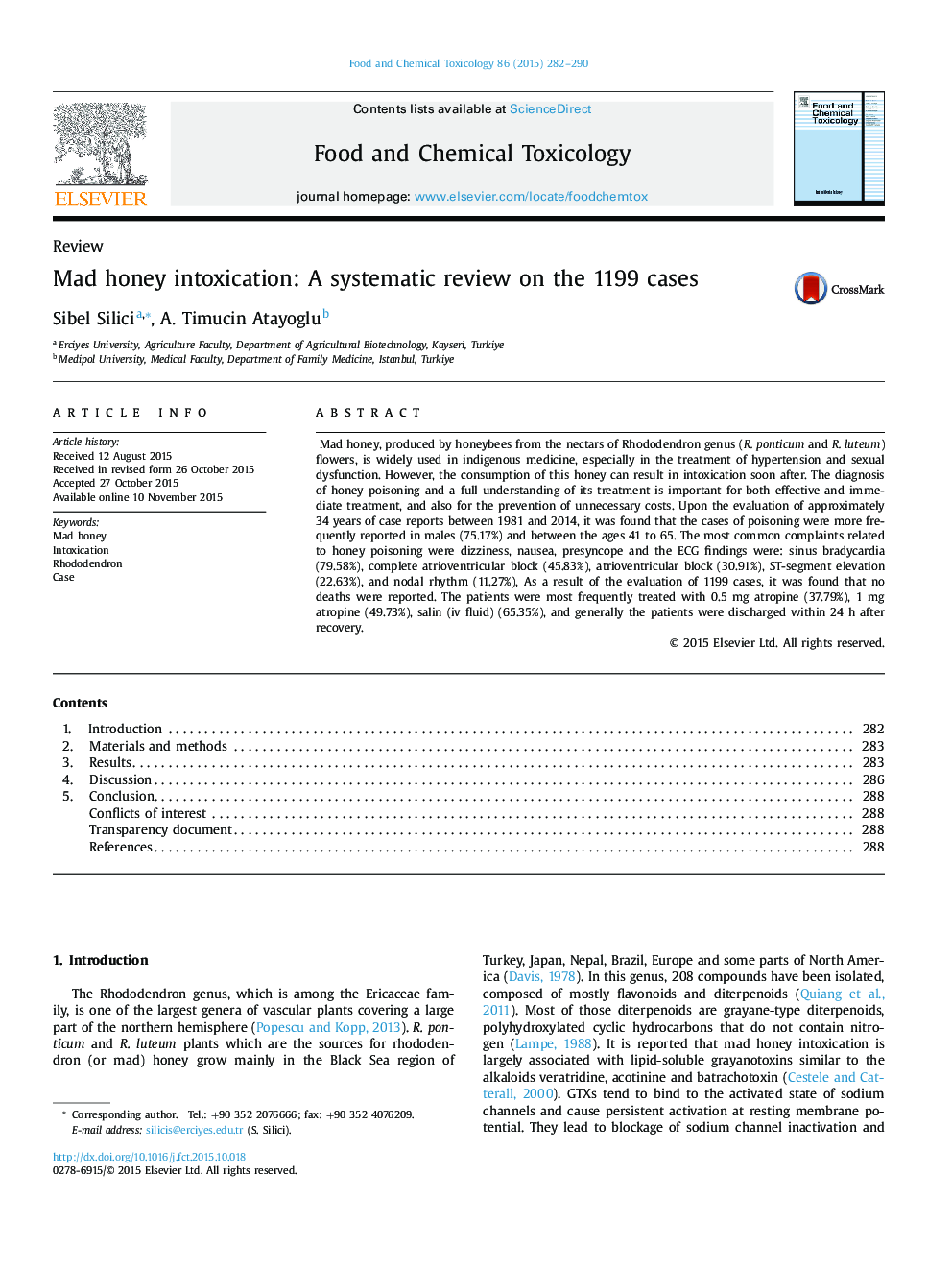| کد مقاله | کد نشریه | سال انتشار | مقاله انگلیسی | نسخه تمام متن |
|---|---|---|---|---|
| 5849552 | 1561758 | 2015 | 9 صفحه PDF | دانلود رایگان |

- Mad honey is consumed more by middle age men than women.
- Main complaints of those who consume mad honey are dizziness, bradycardia, nausea, vomiting and presyncope.
- The most important parameters in clinical diagnosis are low pulse rates and drop in blood pressure.
- Consuming 1-5 tablespoon of mad honey usually causes intoxication.
- Treatment of 0.5-1Â mg atropine and salin i.v. is generally effective.
Mad honey, produced by honeybees from the nectars of Rhododendron genus (R. ponticum and R. luteum) flowers, is widely used in indigenous medicine, especially in the treatment of hypertension and sexual dysfunction. However, the consumption of this honey can result in intoxication soon after. The diagnosis of honey poisoning and a full understanding of its treatment is important for both effective and immediate treatment, and also for the prevention of unnecessary costs. Upon the evaluation of approximately 34 years of case reports between 1981 and 2014, it was found that the cases of poisoning were more frequently reported in males (75.17%) and between the ages 41 to 65. The most common complaints related to honey poisoning were dizziness, nausea, presyncope and the ECG findings were: sinus bradycardia (79.58%), complete atrioventricular block (45.83%), atrioventricular block (30.91%), ST-segment elevation (22.63%), and nodal rhythm (11.27%), As a result of the evaluation of 1199 cases, it was found that no deaths were reported. The patients were most frequently treated with 0.5 mg atropine (37.79%), 1 mg atropine (49.73%), salin (iv fluid) (65.35%), and generally the patients were discharged within 24 h after recovery.
Journal: Food and Chemical Toxicology - Volume 86, December 2015, Pages 282-290